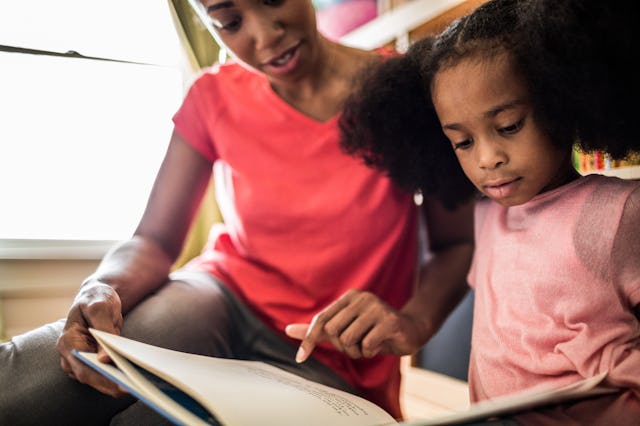How To Recognize The Signs Of Dyslexia In Kids, & What To Do Next
Advocacy and emotional support can go a long way.

The most common misconception surrounding dyslexia is that it only causes people to reverse letters when reading. While that's partially true, this is just one misconception that often leads to dyslexia being mistaken for other learning disabilities or going unnoticed altogether. And for kids with dyslexia, early intervention is critical.
"Recognizing the signs of dyslexia early on can make a significant difference in a child's learning journey," says Benjamin Powers, president of The Dyslexia Foundation and executive director of The Southport School, an independent school for neurodiverse learners, adding that "If students at risk for dyslexia are provided with an appropriate amount of evidence-based instruction early in school, the majority of them will achieve grade-level reading ability over time."
What is dyslexia, and what does it look like?
Dyslexia is a learning disorder that affects an estimated 1 in 5 children and is caused by a number of genes, making it strongly hereditary.
It is typically characterized by substandard literacy skills in school-age children. Identifying dyslexia in early readers can be especially difficult for the untrained eye since it's normal for children at this stage to reverse or mix up their letters and to read slowly.
However, since dyslexia ultimately stems from difficulty processing and remembering information that can affect a child's ability to manipulate sounds and spell and reduce their rapid visual-verbal response time, it can be recognized even before a child learns to read if you know what to look for.
Powers breaks down the signs of dyslexia into these age and learning groups:
Early Childhood
- Oral language mistakes, like saying "beddy tear" instead of "teddy bear"
- Struggling to name familiar objects
- Rhyming difficulty
- Difficulty with sequencing (e.g., alphabet)
- Problems following multi-step directions
- Family history
Grades K-2
- Trouble remembering letter names and their sounds
- Confusing letters that look or sound similar
- Struggling to read familiar words
- Substituting words when reading aloud
- Difficulty separating the individual sounds in words or blending sounds to make a word
- Spelling difficulties
Grades 3-5
- Confusing or skipping small words (e.g., or and of)
- Difficulty decoding new words
- Trouble recognizing common words
- Struggling to explain what happened in a story
- Poor spelling
- Avoiding reading whenever possible or getting frustrated or upset when reading
How can I be sure my child is dyslexic?
"One way parents can identify children who may be at risk for dyslexia is to use a research-based screener for dyslexia. Although screeners cannot diagnose an individual with dyslexia, they can provide important insights into whether a child may be at risk for reading failure," says Powers, suggesting that caregivers carefully select appropriate screening resources, like those The Southport School offers.
While no single method alone can identify dyslexia, a licensed educational psychologist is best equipped to complete this testing. Parents should also work closely with teachers, pediatricians, and, if necessary, other medical professionals, including neuropsychologists and speech-language pathologists.
How can I support my dyslexic child?
Powers says there are several ways a parent can support their child, directly and indirectly, and that tapping school resources designed to support a child's language development is key.
"Once a child enters school, keeping track of whether a child is achieving reading benchmarks and raising concerns about a lack of effective progress is important. If a parent is unsure about how to engage their school system, there are a number of resources, [including] special education PTAs [and] online or in-person parent support groups [like] Decoding Dyslexia," offers Powers.
Outside of advocacy in the educational system, Powers says that the emotional support parents can provide to their children is just as important, as it shows the child that they are not alone in their struggles.
This can be achieved in myriad ways, including encouraging them to participate in activities that allow them to demonstrate their strengths or that simply bring them joy. This will, in turn, have a positive effect on their self-esteem and self-efficacy levels — opportunities that Powers says can lead to future successes.
And it's not only children with learning disabilities that need support.
Siblings can often feel left out when additional time and resources are spent on a sibling with dyslexia. Finding time to listen to and validate a sibling's feelings is vital in helping them to understand that they are no less a valuable part of the family and that their help and support are necessary. "One way to frame the conversation with [siblings] is to help them develop a good definition of fair, which is everyone getting what they need to be successful," explains Powers.
Additional resources on dyslexia include: